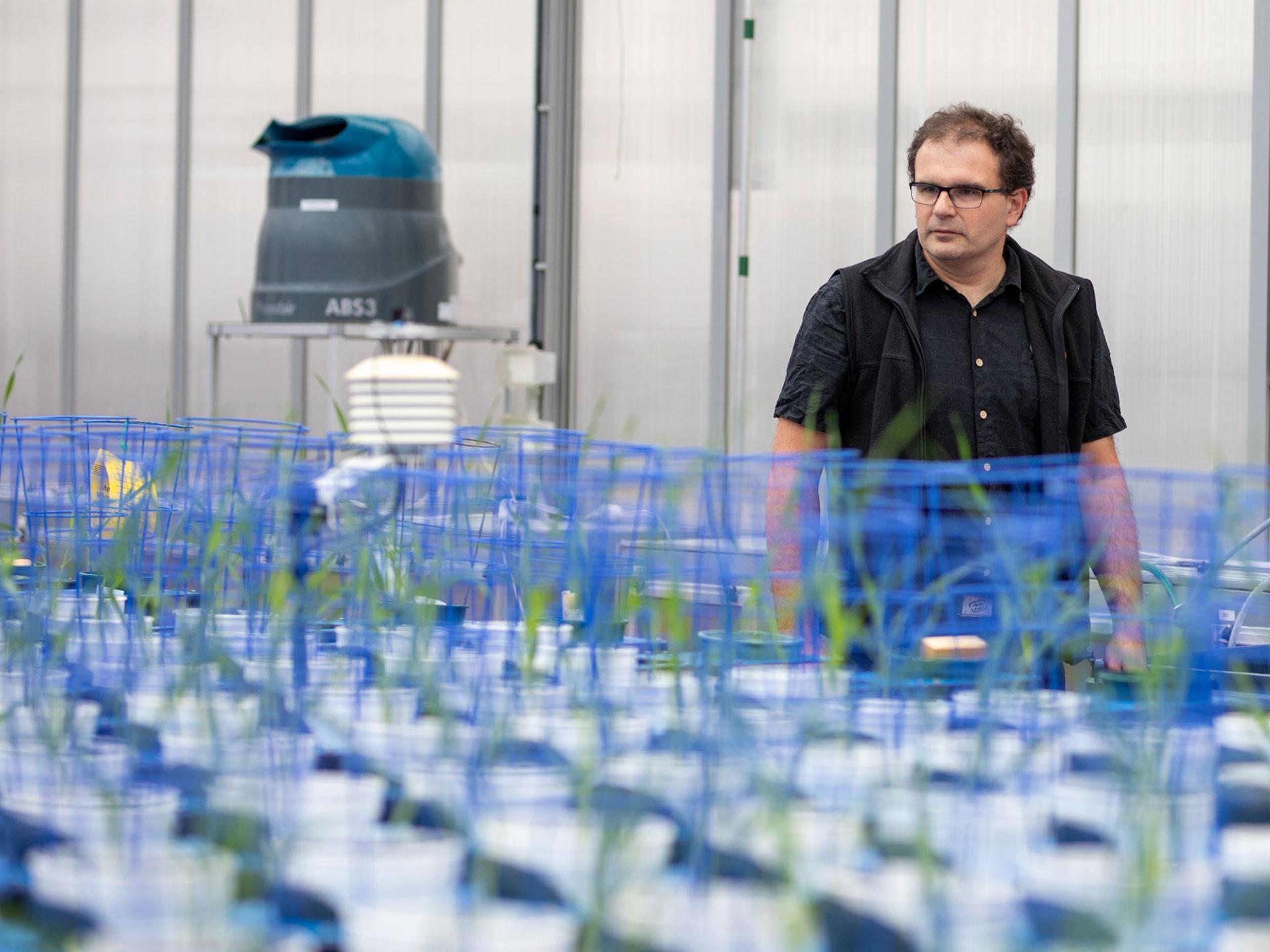Enhancing wheat yield and drought tolerance

Scientists are looking for students to explore stomata signalling pathways with the aim to increase yield potential in wheat.
Yield potential is determined by numerous genetic and environmental factors, with photosynthetic capacity one of the most important contributors to grain yield.
The intake of carbon dioxide (CO2) occurs through open stomata is an important process during photosynthesis, allowing carbon fixation to take place which results in the growth of the plant.
However, as water leaves through open stomates, a delicate balance must be maintained between maximising carbon fixation and minimizing water loss particularly during times of drought.
Maximizing grain yield therefore requires a careful balance between photosynthesis and water-use efficiency (WUE). Stomatal patterning on a leaf and the regulation of when they are open and closed are two parameters which can be altered to manipulate photosynthesis and WUE. Key genes for controlling stomatal patterning and regulation have been identified and characterised in dicot plants.
However, little is known about these processes in cereal crops or how to manipulate the patterning and regulation of stomata to enhance both yield and WUE.
The aim of this project is to determine if we can improve both yield and water use efficiency in wheat by altering the expression of four key genes involved in stomatal patterning and regulation.
Cadenza wheat plants have been mutated using the chemical ethyl methanesulfonate (EMS), which makes small alterations to the plant's DNA. Mutant wheat has been selected with alterations in the DNA sequence of four genes involved in controlling leaf stomatal distribution (MUTE, YODA) and closing of stomata (OST1 and SLAC1).
The project will involve characterising the growth of these wheat plants under both optimal and drought conditions. Plants will be grown in the Plant Accelerator's Smart House and non-destructive phenoytyping using RGB and hyperspectral cameras used to determine plant growth rates and drought tolerance. DNA and RNA will be extracted from growing plants to confirm the presence of the mutation in the genes of interest and the expression level (if any of the gene).
At the end of the project lines with promising phenotypes will be used in a breeding program to introduce the valuable traits to Australian germplasm.
This project forms part of a larger International Wheat Yield Partnership project which aims to enhance wheat yield by 50% by the year 2050.

Supervisor
Associate Professor Stuart Roy
Research area: Department of Agricultural Science
School of Agriculture, Food and Wine
Recommended honours enrolment: Honours in Agricultural Science or Honours in Plant Science
